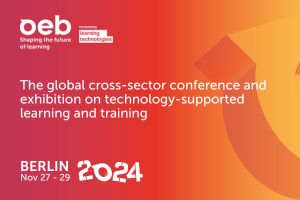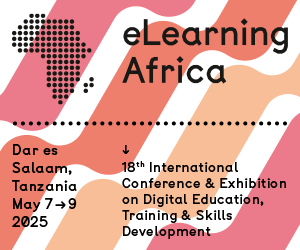The Traps of eLearning Trends
Brühl (GER), March 2015 - (by Pascal Balancier, AWT and Rolf Reinhardt, LANETO e.V.) Predicting eLearning trends can be tricky - not just for self-proclaimed eLearning experts, but even for highly respected committees such as the New Media Consortium (NMC), which publishes the "Horizon Report". In one of his latest blog posts, Stephen Downes claims that the predictions of the NMC would not be based on "deep knowledge", but would, in fact, be influenced by "popular press and marketing campaigns".
But what actually is a trend? We can consider a trend what remains when the "marketing bubble" bursts, something that inherits a certain added value that can be adapted by many people. A trend is a certain tendency, a certain direction to a place called "mainstream". The reason so many people run after trends and promote them when they think they have found one is that a trend is a future market. Those who are too early fail, exactly like those who are too late. But how does this relate to eLearning?
There are as many concepts as buzzwords in the cloud: augmented reality, 3D printing, microlearning, gamified learning, badges, etc. Some of them are based on earlier trends that have meanwhile become mainstream, such as mobile learning and, to a certain extent, MOOCs. Others have been renamed and widened: for example, monitoring vocational training is now called "learning analytics" – but in their essence, they have kept the core principle. It is often a question of marketing, like Pearson, which has condensed the quality of both learning product and learning process into the word "efficacy". This brings us to the next question: Who defines actually a learning trend?
Whereas researchers usually promote their insights into innovative pedagogic or didactic practices, the interest of companies such as Google, Apple, and Acer is to create trends that involve their own hardware: e.g. Google for its augmented-reality glasses, Apple for its iWatch, and Acer for its low-budget tablet. But only if practice and technology can merge into a significant synergy, can a real trend be seeded. But whether the trend actually takes off is matter of another final question: Is there fertile soil?
In theory, informal learning in social online networks is a naturally growing trend: We see an increasing number of registrations at all kind of social platforms – and more and more companies try to make use of this technology to enable exchange of knowledge among their employees. But what works well in the USA or the UK can be more difficult in Germany or France. Management, in particular, but also many members of the "ordinary" staff seem to have problems exposing themselves in an open place. In these countries, data protection and privacy play a very important role.
In summary, certain tendencies can indeed be identified, particularly the personalization of learning via learning analytics and mobile apps - and a consolidation of initiatives. Whilst there has been a period of flowering of many small, expert communities, associations, and projects over the last twenty years, there now seems to be an amalgamation of smaller initiatives in both larger companies and universities. One reason is the growing importance of the eLearning market and thus also investments, and another reason is the increasing will to engage in partnerships.
The Learning Agency Network (LANETO e.V.) provides an infrastructure to network across the corporate and higher-education sector in order to exchange both knowledge and experience.









